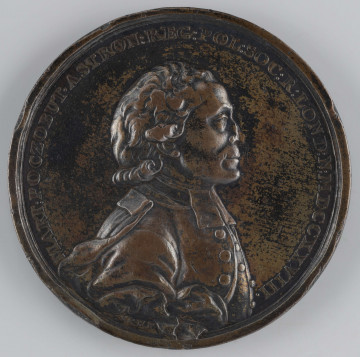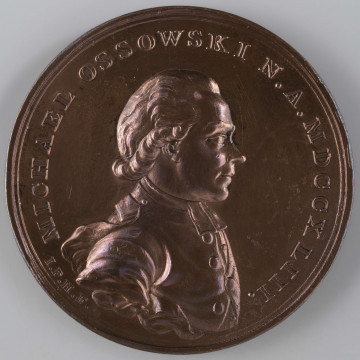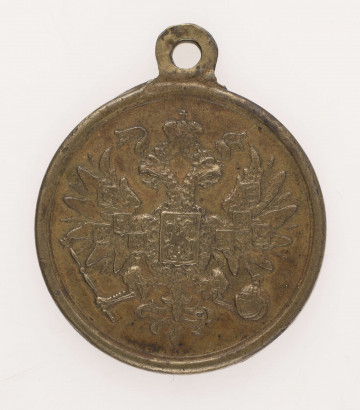
Marcin Poczobut
1775
National Museum in Lublin
Part of the collection: Polish medallic art.
The medal in honour of the Jesuit Karol Wyrwicz (1717-1793) was made on the initiative of Stanisław August Poniatowski (1764-1795) by court medallist Jan Filip Holzhaeusser (1741-1792). The King's gesture was in keeping with the spirit of the age, when the beauty of art, apart from arousing aesthetic sensations, was subordinated to a didactic purpose, namely the strengthening of proper attitudes and the shaping of models of citizens aware of the good of the Republic.
A great role in this was played by the Jesuit schooling, which from the 1730s onwards opened to a model of education in line with the requirements of the times. At that time, some Polish colleges introduced the teaching of mathematics, physics and modern languages. At the beginning of the 1840s, history and geography gained a separate status. An expression of the educational reform was the establishment, from the late 1740s, of Jesuit colleges for the nobly born. The Collegium Nobilium in Warsaw, founded in 1752 alongside Franciszek Bohomolc, Franciszek Paprocki, Mikołaj Kossowski and Adam Naruszewicz, involved the eminent historian, geographer and ethicist Karol Wyrwicz. Already as Rector of the Collegium (from 1762), he reorganised and reformed the school. After putting the school into debt, he recruited an excellent teaching staff, following the latest curriculum. The expansion of the Collegium initiated by him was stopped by a fire, and these intentions were finally foiled by the liquidation of the institution in 1777, provoked by the previous dissolution of the Society of Jesus. Karol Wyrwicz was the author of school history and geography textbooks recommended by the Commission of National Education.
The obverse of the medal is decorated with a bust of Karol Wyrwicz in monastic garb, surrounded by a Latin inscription, translating: "Karol Wyrwicz, Rector of the Collegium Nobilium of the Warsaw Society of Jesus". His merits are summarised by the Latin inscription on the reverse: IUVENTUTIS INSTITUTIONE SCRIPTIS QUE DE PATRIA ET LITTERIS BENE MERENTI STAN[islaus]:AUG[ustus]:REX MDCCLXXII, translated: "To the youth by excellence and writings to the fatherland and sciences distinguished by Stanislaus Augustus the king, 1772".
Probably two copies of this work were minted in gold - for the monk and the King. At present its silver and bronze prints are known. Our bronze medal was bought to the Museum collection together with Bolesław Minka's collection in 1965.
Tomasz Markiewicz
Dimensions
cały obiekt: width: 44 mm
Technique
stamp minting
Material
copper
Creation time / dating
Creation / finding place
Owner
The National Museum in Lublin
Identification number
Location / status

1775
National Museum in Lublin

1787
National Museum in Lublin

National Museum in Lublin
DISCOVER this TOPIC
National Museum in Lublin
DISCOVER this PATH
Educational path